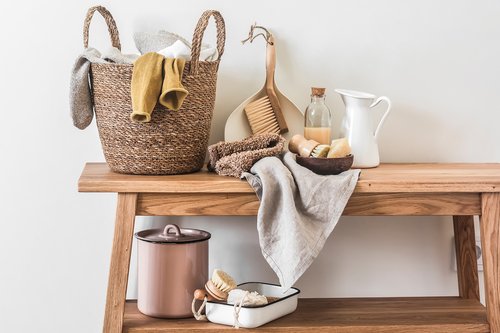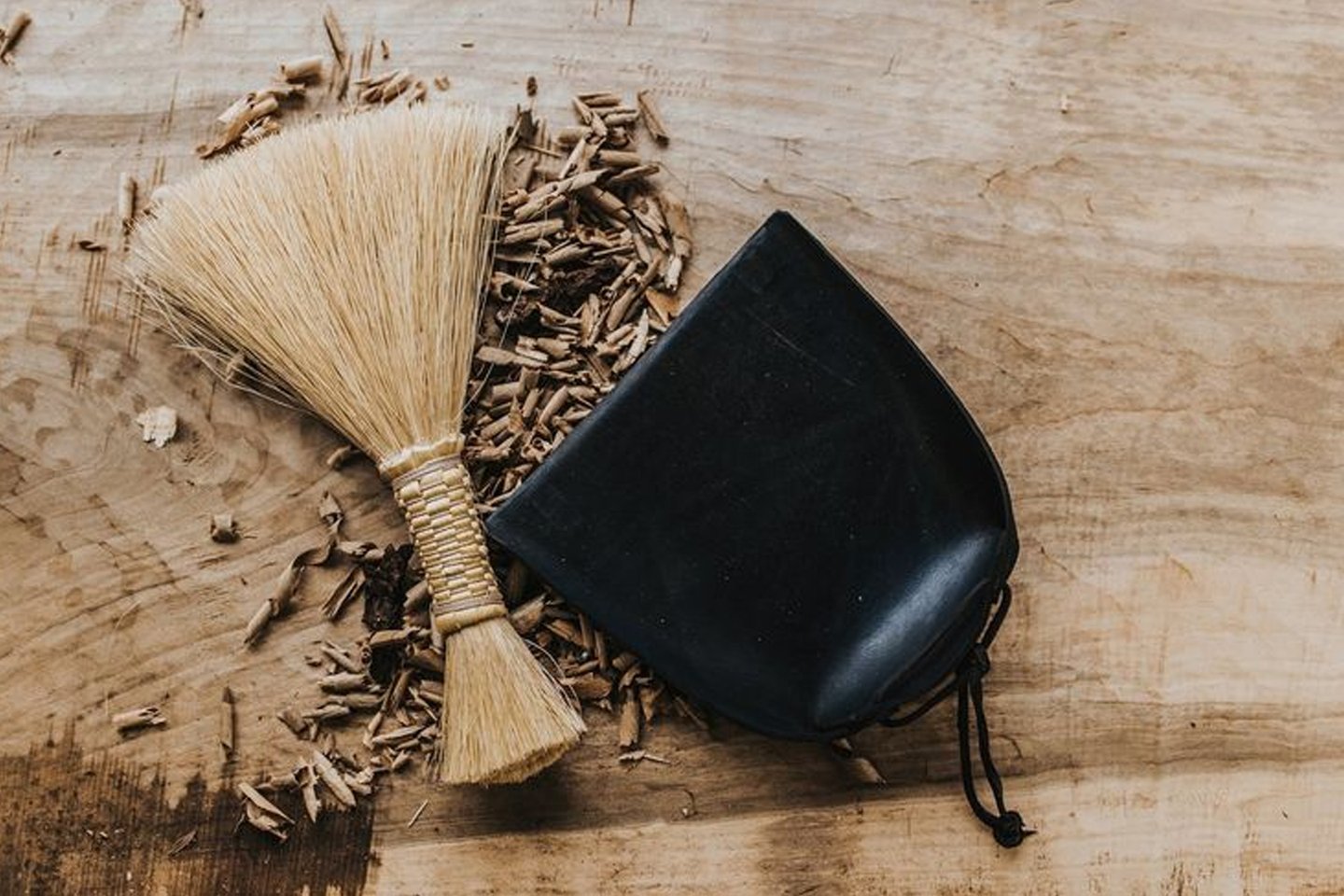
5 min read
Spring Cleaning For a Healthy Home
The renewal of seasons offers the perfect opportunity to deep clean our living spaces; to eliminate the dirt and debris we can see but, even more importantly, the invisible pollutants we can't.

5 min read
We bring you the checklist you never knew you needed for keeping your home healthy and well-maintained all year round.
The onset of Spring is often the time when we declutter and deep clean our homes, but home maintenance is something that should be considered throughout the year. While many of us remember to regularly dust surfaces, vacuum carpets and clean windows, there are plenty of less obvious maintenance tasks that can significantly improve the safety, efficiency and longevity of your home’s appliances and systems. Overlooking these tasks can lead to costly repairs, poor air quality or even safety hazards. Here are some essential but often forgotten home maintenance steps to help keep everything running smoothly throughout the year.
Filters are crucial for maintaining good air and water quality in your home. However, they often go unnoticed until a problem arises. Here’s what to check for:
Dehumidifiers can be a breeding ground for mold and bacteria if not cleaned regularly, yet many people overlook their maintenance. To keep yours running efficiently and ensuring healthier air quality, empty and rinse the water collection tank daily to prevent stagnant water buildup. At least once a week, wash the tank with warm, soapy water and disinfect it with a diluted vinegar solution. The air filter should be cleaned or replaced according to the manufacturer’s recommendations to maintain airflow and prevent dust accumulation. Don’t forget to check and clean the coils and vents, as trapped dirt can reduce efficiency.
Your refrigerator’s water filtration system, if it has one, is a significant aspect to consider. To clean your refrigerator water filter, replace it every six months, as guidelines often recommend by the manufacturer. It’s also important to make sure to clean the water dispenser – turn off the water supply, scrub the nozzle with vinegar and flush the water line to ensure a healthy water flow. If your fridge has an ice maker, regular cleaning is essential to prevent buildup and ensure fresh ice. Start by emptying the freezer to remove odors, then power off the appliance. Remove and hand-wash any detachable ice maker parts with warm soapy water, using a toothbrush for hard-to-reach spots.
To prevent mold in your dishwasher, clean the filter regularly, run a cleaning cycle with vinegar or dishwasher cleaner, and wipe down seals and edges where moisture accumulates. Remove and clean clogged spray arms for better performance. Always use a high-quality dishwasher detergent to prevent excess suds and residue. Leaving the door ajar after each cycle and checking for leaks also help reduce moisture buildup.
While there is no evidence that it can affect our health, limescale build-up can negatively impact appliances that use water, reducing efficiency and even leading to malfunctions. Regular descaling is essential for kettles and coffee machines, for which you can use a mix of water and white vinegar or a descaling solution to remove mineral deposits. When it comes to washing machines and dishwashers, running an empty cycle with that all-important white vinegar can help prevent scale build-up and keep your appliances functioning properly.
Dust, grease and food particles can accumulate behind your fridge, freezer, range or other large appliances over time. This not only affects cleanliness and overall health of the occupants of the home but can also lead to reduced efficiency and potential overheating. At least twice a year, carefully pull appliances away from the wall, vacuum the dust from coils and vents, and wipe down the walls and floor. If your fridge has a condenser coil, cleaning it regularly can help maintain optimal energy efficiency and prevent breakdowns.
Regular washing machine maintenance helps prevent mold, odors, and mechanical issues while ensuring your clothes come out truly clean. To keep your machine in top condition, run a hot wash cycle with white vinegar or a specialized, non-toxic washing machine cleaner once a month to remove detergent residue and limescale buildup. Wipe down the rubber door seal, as it can trap moisture and develop mold over time. Clean the detergent drawer regularly to prevent mildew and blockages. Additionally, check and clean the drain filter, as trapped lint, hair and small objects can affect drainage.
While cleaning the lint trap after every load is a common habit, many people forget about the dryer vent. A clogged dryer vent is not only inefficient but also a serious fire hazard. Check and clean the vent pipe every few months to ensure proper airflow and prevent potential overheating. While you can take a DIY approach using a vacuum or vent cleaning brush, this should be paired with regular professional cleanings. Professionals have the tools to remove deep lint buildup, ensuring optimal performance, safety and cleanliness.
Your vacuum cleaner works hard to keep your home clean, but how often do you clean it? A clogged or dirty vacuum loses suction, making it less effective. Empty the dust bin or replace the bag regularly, clean or replace filters, and remove tangled hair from the brush roll. Additionally, scheduling a professional service once a year helps maintain suction power, improve air quality and prevent motor strain, ensuring your vacuum runs efficiently for years and saves you money in the long term.
Your garbage disposal can easily become a breeding ground for bacteria and unpleasant smells. There are several ways to keep it fresh and running efficiently. You can run ice cubes and citrus peels through the disposal to sharpen blades and eliminate smells and use a chemical-free mixture of baking soda and vinegar to break down residue. Always run cold water while using the disposal to prevent grease from solidifying and clogging the system.
Check your owner’s manual for specific maintenance instructions for your different appliances, as requirements may depend on the model. Following manufacturer recommendations ensures better performance, efficiency, and a longer lifespan.
Drains in kitchens and bathrooms can accumulate hair, soap scum, food particles and grease, leading to blockages and foul smells. To maintain free-flowing drains, pour a mix of baking soda and vinegar down the drain, let it sit for 15 minutes, then flush with hot water and use a drain snake to remove any visible clogs. Avoid pouring fats and oils down the kitchen sink, as they can solidify and cause blockages.
Grout and sealant play an important role in preventing water damage in kitchens and bathrooms. Over time, grout can become cracked, and sealant can degrade, leading to mold growth and leaks. Inspect tiled areas regularly and reapply sealant as needed to keep these spaces watertight.
This is a simple but crucial safety check. Smoke and carbon monoxide detectors should be tested monthly, and their batteries should be replaced at least once a year. If your detectors are more than 10 years old, consider replacing them entirely. Having functioning alarms in place can be life-saving in case of an emergency.
A small pest problem can quickly turn into a major infestation if left unchecked. Keep an eye out for droppings, gnaw marks or shredded materials, scratching sounds inside walls or ceilings and unusual smells – particularly in dark or hidden spaces. Sealing cracks, keeping food properly stored, and addressing signs of pests early can prevent larger issues down the line.
Regular home maintenance doesn’t have to be overwhelming – small, consistent efforts can go a long way in keeping your space safe, healthy and comfortable. By tackling these overlooked tasks throughout the year, you can prevent costly repairs, improve efficiency, and ensure your home stays in top condition, keeping you and your family healthy all year round.
Feature Image: Leather Dustpan and Tampico Brush by Sunhouse Craft

5 min read
The renewal of seasons offers the perfect opportunity to deep clean our living spaces; to eliminate the dirt and debris we can see but, even more importantly, the invisible pollutants we can't.

3 min read
In our investigation into dust, we consider practical strategies to minimize its impact and maximize indoor air quality to protect your health.